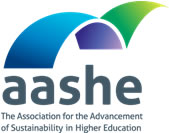AASHE Announces Keynote Speaker for the 2015 Conference and Expo
 PHILADELPHIA, PA – David W. Orr, Paul Sears Distinguished Professor of Environmental Studies & Politics and special assistant to the president of Oberlin College, will join more than 2,000 attendees as the keynote speaker for the Association for the Advancement of Sustainability in Higher Education's (AASHE’s) 2015 Conference & Expo in Minneapolis, Oct. 25–28.
PHILADELPHIA, PA – David W. Orr, Paul Sears Distinguished Professor of Environmental Studies & Politics and special assistant to the president of Oberlin College, will join more than 2,000 attendees as the keynote speaker for the Association for the Advancement of Sustainability in Higher Education's (AASHE’s) 2015 Conference & Expo in Minneapolis, Oct. 25–28.
Mr. Orr is a distinguished professional in the sustainability field who formed the Oberlin Project that aims to create a resilient, prosperous and environmentally friendly community between the City of Oberlin, OH; Oberlin College and private and institutional partners. He is also the recipient of six honorary degrees and other awards including the Millennium Leadership Award from Global Green and the National Wildlife Federation Leadership Award, a Lyndhurst Prize that recognizes moral character, vision and energy.
“We are thrilled to have David join us to speak about transforming sustainability education, this year's conference theme. David's vast experience and support in shaping the next generation of sustainability leaders makes this a keynote session you won't want to miss," says AASHE executive director Meghan Fay Zahniser.
The AASHE annual conference is the largest stage in North America for higher education sustainability thought leadership. Attendees from around the world share innovations, activities, frameworks, learning outcomes, tools, strategies, research, theory and leadership initiatives that are changing the face of sustainability in higher education. Register now and be a vital part transforming sustainability education.
About AASHE
AASHE is helping to create a brighter future of opportunity for all by advancing sustainability in higher education. By creating a diverse community engaged in sharing ideas and promising practices, AASHE provides administrators, faculty, staff and students, as well as the businesses that serve them, with: thought leadership and essential knowledge resources; outstanding opportunities for professional development; and a unique framework for demonstrating the value and competitive edge created by sustainability initiatives. For more information, visit www.aashe.org.